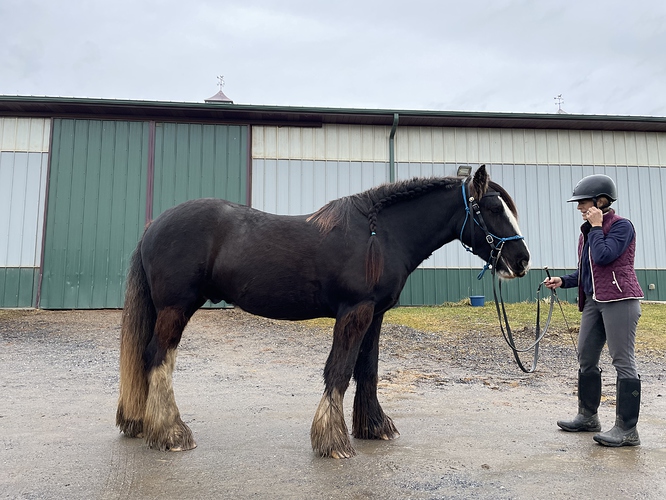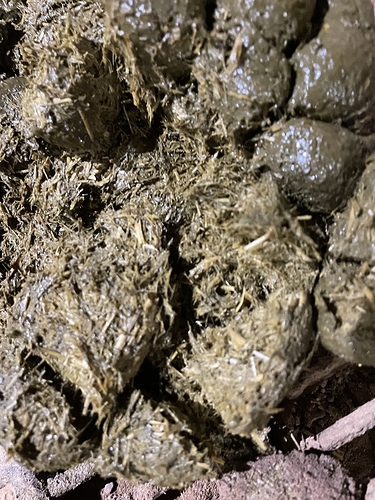That video was from years ago. Before I even had a diagnosis. At that point the vets were chasing lameness issues and not finding anything. As a young horse she did a lot of bucking, especially on the lunge. It wasn’t until I started riding her and asking for the canter that I could really feel that she didn’t canter right. Then we chased the lameness diagnosis and tried injections, had x rays done. Had her sacroiliac injected as well as trying Adequan. She didn’t start becoming exercise intolerant until her teens when she went down on a trail ride. The first time I thought it was colic, but it kept happening. Then after about 20 minutes of rest or so she would suddenly feel better and by the time we made it back to the trailhead and I was ready to haul her off to the vet, she would be recovered. I had her ovaries checked in case it was internal- everything was normal. My friend who works at the vet school suggested tubing her for colic, but she only gets sick if you exercise her so I didn’t see how that would help.
I always thought it was odd that as a younger horse, the harder I rode her the sounder she would get. A week of riding 2-3 hours a day and she would look fantastic and her canter would improve. The minute I stopped riding her that hard, she would be back to crossfiring again.
Now that she’s getting older , she’s definitely worse… It’s definitely progressing. Now she’s stiff after about 20 minutes of ridden work. I can’t really ride more than 40 to 60 minutes without risking an episode of her having cramps/laying down.
I’m going to put her back on a max dose of vitamin E but I’m not sure that will make a difference at this point.
I really appreciate that she never did toss me off with all these issues. But she was born like this so she probably just learned to tolerate the muscle tightness/disability as best she could. I always thought it felt like a mechanical lameness because she gets choppy but it’s not painful in the way a lameness issue is. If that makes sense. Canter work always made her uncomfortable though.
If it continues to progressively get worse I will probably have her donated to the university. Right now she’s mostly happy and I keep hoping I’ll find some way to keep her condition stable.



 Thank you for mentioning him to the clinic, it was really so kind. Send me a PM if you’d like and I keep you posted on the boring (to others) logistical updates
Thank you for mentioning him to the clinic, it was really so kind. Send me a PM if you’d like and I keep you posted on the boring (to others) logistical updates 